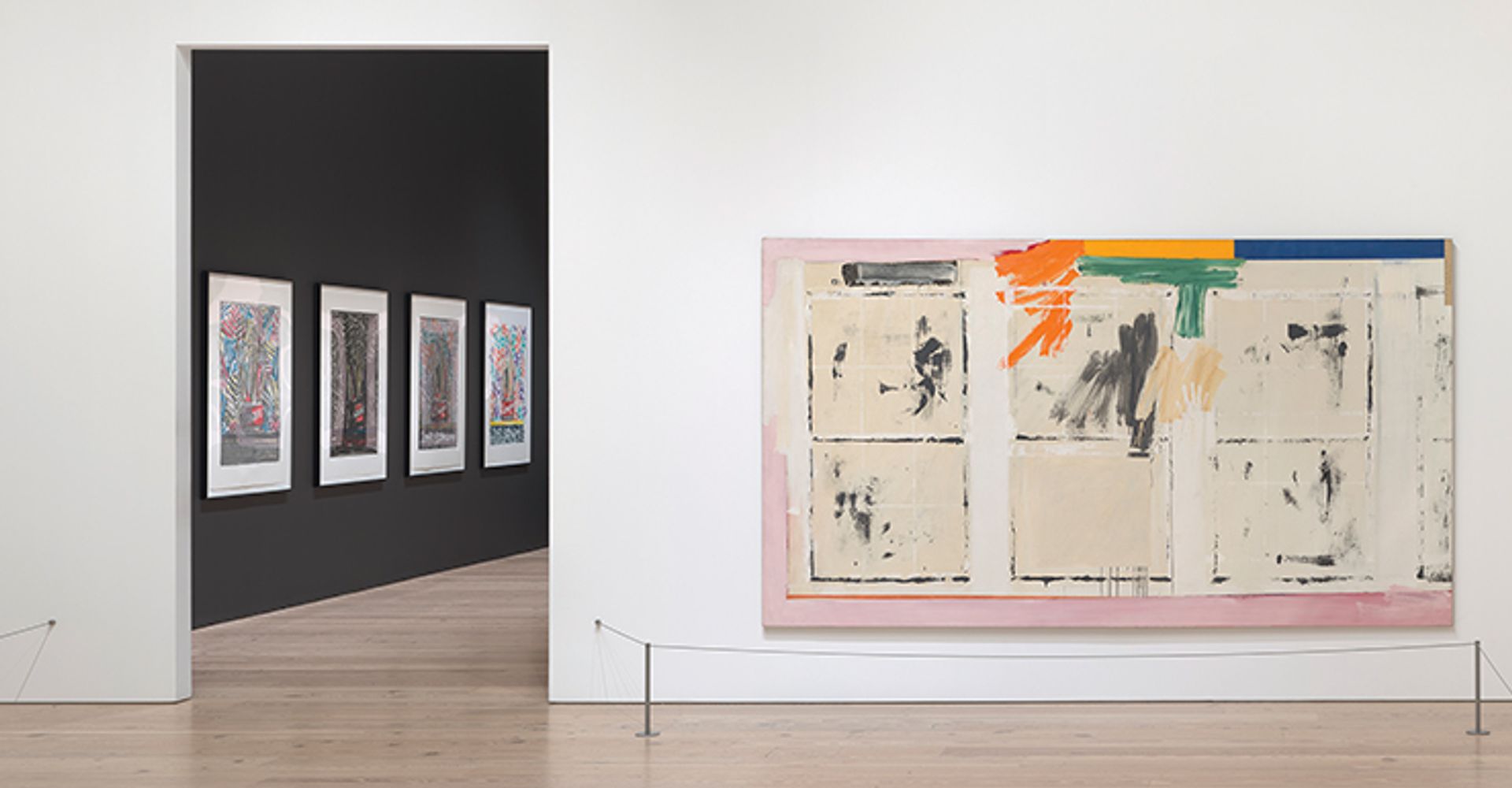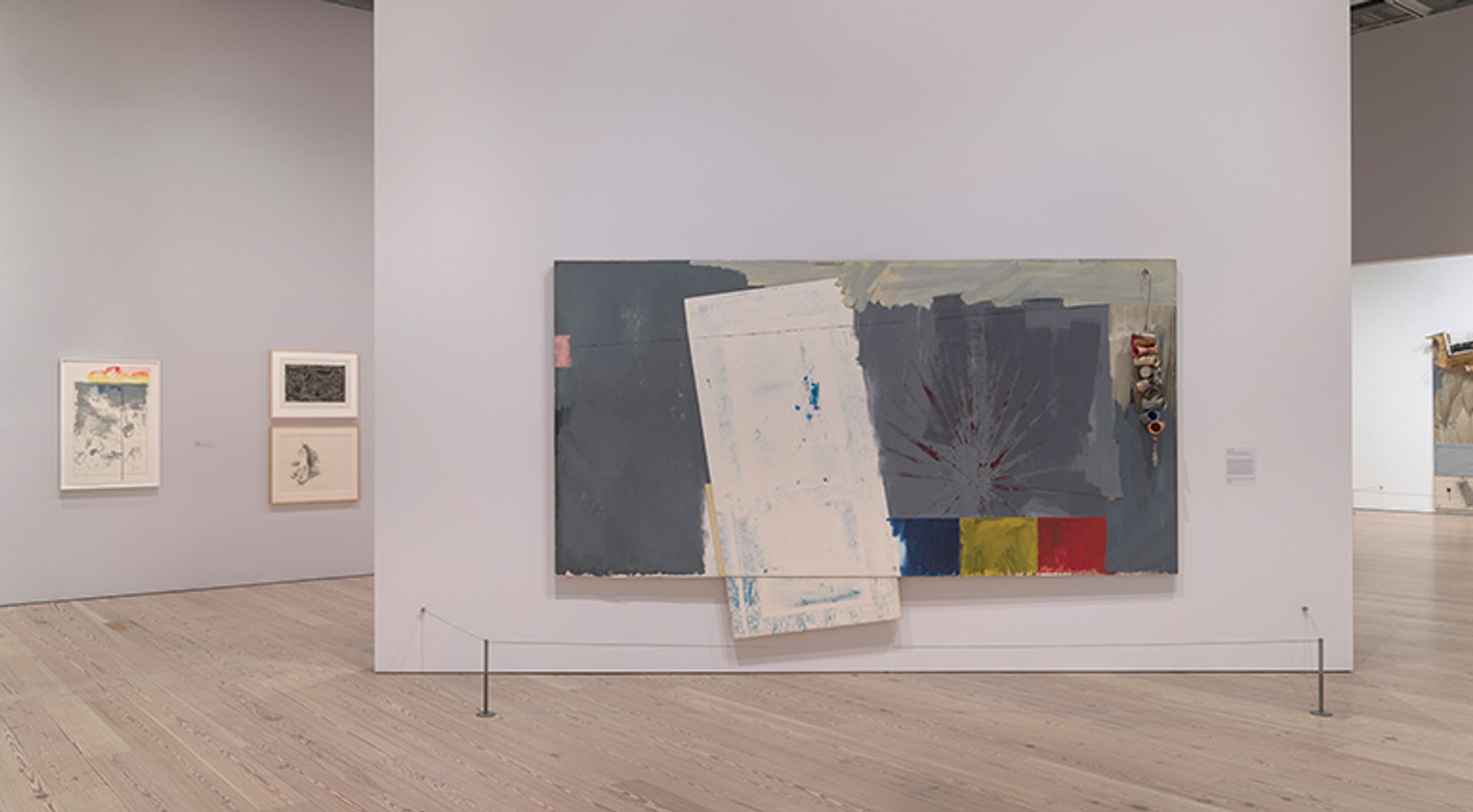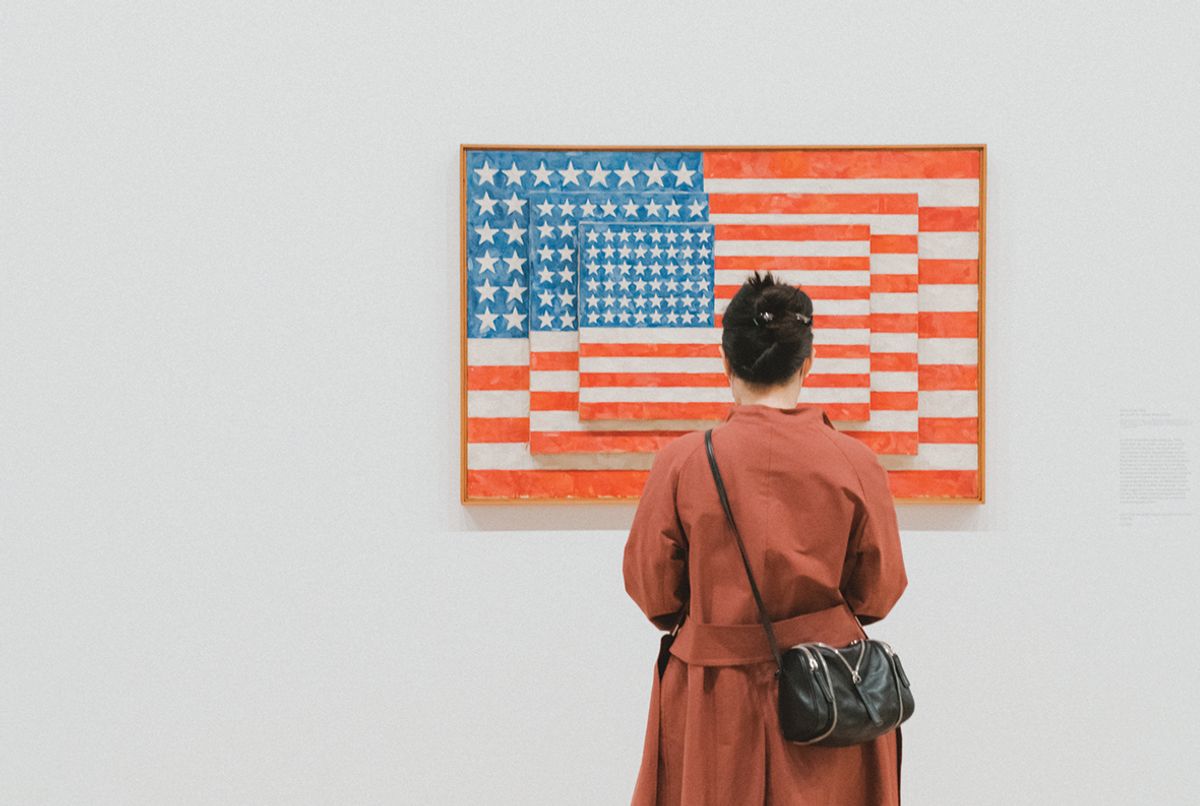Jasper Johns: Mind/Mirror is the well-deserved though excessive retrospective of the 91-year-old artist’s work over 67 years, with 246 objects at New York’s Whitney Museum of American Art. The Philadelphia Museum of Art is also in the mix, hosting a simultaneous companion retrospective of around 250 works by Johns. We are not looking at an embarrassment of riches. Rather, the Whitney show is an invasion of sameness and ultimately numbing.
It is the supreme flower of an inability to edit, and a measure of how herdish New York critics and collectors are. It is the ultimate curatorial tin ear. A retrospective is a good idea – Johns has not had one in New York in more than 20 years. But you do not want people to leave your show liking the artist you revere less.
Where to start? Johns is an artist of consequence. Target With Four Faces (1955), Three Flags (1958) and Map (1961) are arresting though odd beauties, cool and detached but dense like icing on a cake. They are rightly taught in every survey course in post-war American art. Johns had a passage of creative genius when he combined encaustic and collage to make surfaces that compelled close looking.
Generally a big bore, there are sudden moments of intense beauty
White Flag (1955) is simply gorgeous. It is the counterpoint to Jackson Pollock’s drips and Willem de Kooning’s slashes. In using flags, and maps, Johns steered post-war American painting from abstraction, an assault on the subject’s integrity the natives found unfair and tricky, back toward the real thing – sort of.
Flags, while ubiquitous, are abstractions, so it’s not like we are returning to the Ashcan School. Johns’s paint is mixed with crumbled newspaper, which gives a special texture but also has bits of pictures and words. Many a dissertation has taken a stab at interpretation, with Johns obliging all with nary a denial nor a confirmation.

Johns's 1982 Savarin monotypes and (foreground) Studio II (1966) Photo: Ron Amstutz
For New York critics, he was a gold mine of allusion and safe otherness as well as so prolific there was always something new to say about him, however trivial it might have been. A Southerner, he was outsider enough. He is gay but mostly reticent about it. Target With Four Faces is said to concern the hide and seek gay men needed to play in the 1950s to survive. As targets, they responded with effacement. Liar, a 1961 painting Johns created after he broke up with fellow American artist Robert Rauschenberg, is refreshingly loud and bitchy. It is in the Whitney show and very good. Otherwise, Johns is no David Wojnarowicz. Leo Castelli, Johns’s longtime dealer, smartly and assiduously marketed him. Castelli and Johns developed close relationships with curators at the Whitney and Museum of Modern Art in New York and with the Hamptons set of buyers.
Contrasting visions
The version of Mind/Mirror in Philadelphia is marketed as a fascinating case of doubling curatorial takes, but I think this is contrived, self-indulgent and economically inefficient. Philadelphia might feel it has first dibs on a big Johns show since his professed muse, Marcel Duchamp, was much admired and collected there. Duchamp is many things, I know, but a con artist and tease are among them, as he acknowledged. And he eventually found even his own art a bore. When it comes to Johns, though, I wish the two museums flipped a coin to see who went first and then decided on roughly one curatorial version. As it is, the two are sharing the same catalogue. Only Johns fanatics will see both versions of the exhibition.

From left: Pinion (1966), From Eddingsville (1969), Edisto (1962) and Studio (1964) Photo: Ron Amstutz
I am not a contrarian, but I do not belong to the New York echo chamber. As a minority of one, a Vermont art critic, I’m happy to wish Johns many more years. He burnt all his juvenalia in 1954, had a dream about the American flag, and, as the Whitney show tells us, a legend was born. He had a few fantastic years. After, say, the early 1960s, though, it is a long slog of small vision. There are coffee cans, strings and things, beer cans, flags, maps, numbers in many media, and most recently, stick figures and skeletons. Most motifs repeat over and over.
Big anchor works such as Studio and According to What (both 1964), Harlem Light (1967) and Racing Thoughts (1983) are not only ugly and bad, they are irrelevancies. They do not speak to our time. Johns is an artist whose currency is the cryptic, whose cards never get put on the table. Does an artist who disguises, who revels in mirrors, meet what seems to me to be a need for frankness, for what is real?
Mind/Mirror is mostly chronological. This makes for a big problem since the great art is front-loaded, in a magnificent gallery of the early flags and maps. A later gallery of Johns miniatures—small versions of his standard motifs—is magical. Castelli did size-pricing so the small things went to low price points. They are still exquisite, though a dark wall colour and smart lighting gives these gems wall power.
I liked the room of Savarin coffee can monotypes, though it is very much for specialists. Most of the visitors in the space seemed to struggle to understand very tiny differences. I am a print specialist, but my own endurance was flagging at that point. A coffee bar would have been most appropriate.
Historical context
Vermonter that I am, and proud of my family’s role in vanquishing the Southern rebellion, I still wanted to see Johns situated as a contemporary of Tennessee Williams, Flannery O’Connor, Harper Lee and Eudora Welty. What would Blanche DuBois make of him? In New York in 2021, a discussion of this kind would be unlikely, and would Johns countenance it?
Although the exhibition is generally a big bore, there are sudden moments of intense beauty, always dark or grey. Night Driver (1960) stopped me and held me. It is a pastel with charcoal and collage. I wish Johns did more pastels, and I wish he did more nocturnes. Grey works for Johns. It is ambiguous and dispassionate, but has authority too. It is calm and dependable, and not for nothing did the grey flannel suit evoke power in the 1950s. Screen Piece (1967) is absorbing. The Art Institute of Chicago’s 2007 show, Jasper Johns: Gray, covered his use of this colour with 100 works. It went to New York’s Metropolitan Museum of Art and, by the by, was a far better show than Mind/Mirror because of its focus.
I love going to the Whitney and admire the director and the curators I know, but Mind/Mirror should be a 150-object show. The exhibition is already augmented by the catalogue, which I read and think is great. It will be the definitive book on Johns. Short essays by Alex Nemerov, Ruth Fine, Carroll Dunham and Michael Ann Holly impressed me the most among the 20 or so, or at least they do not gush and do not write in inscrutable jargon. At 500 objects, Mind/Mirror indulges a New York niche. It does not a great American artist make.
Jasper Johns: Mind/Mirror, Whitney Museum of American Art, New York and Philadelphia Museum of Art, until 13 February 2022


